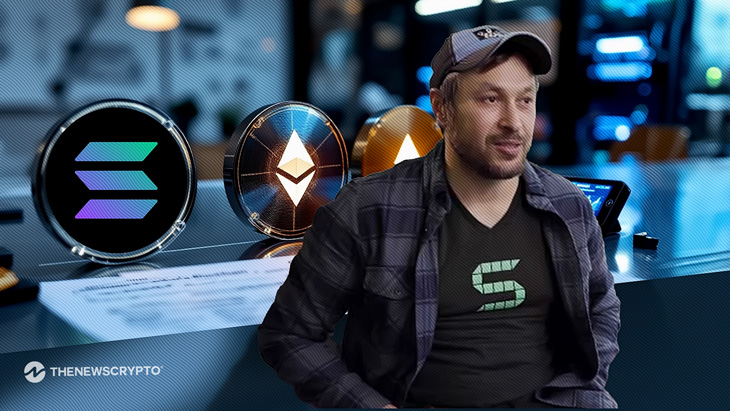- Solana co-founder proposes a Meta Blockchain concept to enable seamless data transfer across multiple blockchains.
- It could dynamically use the most cost-effective data availability (DA) layer.
Solana co-founder Anatoly Yakovenko, known as Toly, has unveiled a novel concept, which he calls the “Meta Blockchain.” The idea seeks to revolutionize how blockchain networks interact by merging data from multiple ecosystems into a single, ordered stream. It let the developers dynamically choose the most cost-efficient data availability (DA) layer.
Significantly, the Meta Blockchain would allow users and applications to post transaction data to any supported chain—be it Ethereum, Celestia, or Solana. Later, this data would be aggregated into a unified, sequential ledger using a predefined set of deterministic rules.
Yakovenko stated:
“There should be a meta blockchain. Post data anywhere, Ethereum, celestia, Solana, and use a specific rule to merge data from all the chains into a single ordering. This would actually allow the meta chain to use cheapest currently available DA offer.”
By embedding the most recent block headers from all target DA layers in every transaction, the Meta Blockchain can ensure a consistent and verifiable sequence. For instance, a Solana transaction posted there would contain the most recently observed blocks from Celestia and Ethereum. With the effect being that the transaction on Solana is sequenced after events that occurred on those other chains.
Cost Efficiency and Developer Flexibility
Yakovenko argues that this setup allows apps and users to leverage the most affordable DA service at any given time without being locked into a specific blockchain. This could be a game-changer for applications, especially rollups and cross-chain aggregators, where gas fees and throughput vary widely depending on network congestion.
Users can choose the cheapest DA layer currently available, suggesting the Meta Blockchain model empowers developers to optimize performance and cost simultaneously.
A Path Away from Centralized Sequencers
One of the central advantages of Yakovenko’s Meta Blockchain is its decentralized nature. Rather than relying on a centralized sequencer to compile and order cross-chain data, the system uses deterministic merge rules. It makes the ordering transparent and trustless.
Moreover, the Meta Blockchain concept aligns with the broader industry movement toward modular architecture. The networks focus on specific roles—like execution, data availability, or consensus—and interoperate through standardized protocols.
By enabling seamless coordination across multiple DA layers, the proposal represents a step toward a more scalable and interoperable blockchain future. If realized, this system could allow users to transact freely across ecosystems, minimizing cost and maximizing choice.
Highlighted Crypto News
Solana (SOL) on the Verge: Can Bulls Break Free from the Bearish Chains?








